-
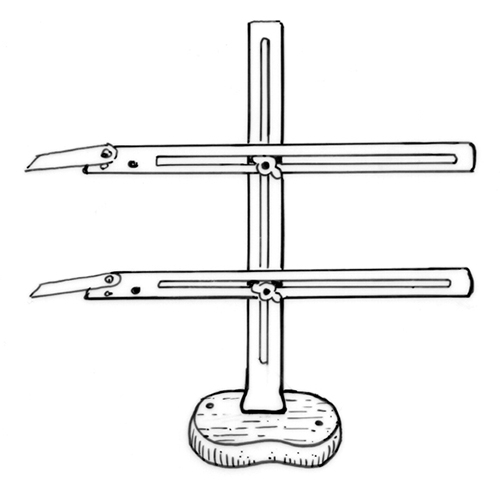 Pottery Illustrated: Clay Measuring DevicesIllustrated clay measuring devices.
Pottery Illustrated: Clay Measuring DevicesIllustrated clay measuring devices. -
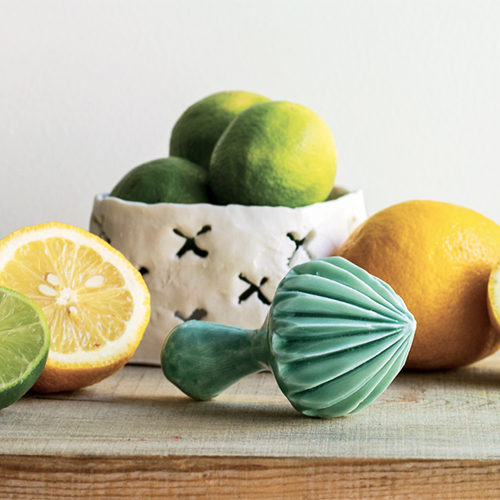 In the Potter’s Kitchen: Citrus ReamerA good citrus reamer is an indispensable kitchen tool. From making cocktails to citrusy desserts to salad dressings, my ceramic reamers are some of my most unexpected kitchen treasures.
In the Potter’s Kitchen: Citrus ReamerA good citrus reamer is an indispensable kitchen tool. From making cocktails to citrusy desserts to salad dressings, my ceramic reamers are some of my most unexpected kitchen treasures. -
 Creating Reverse FacetsWhat I came up with were these elegant facets that created a dynamic rim but also literally pointed my eye down to my decorative surface.
Creating Reverse FacetsWhat I came up with were these elegant facets that created a dynamic rim but also literally pointed my eye down to my decorative surface. -
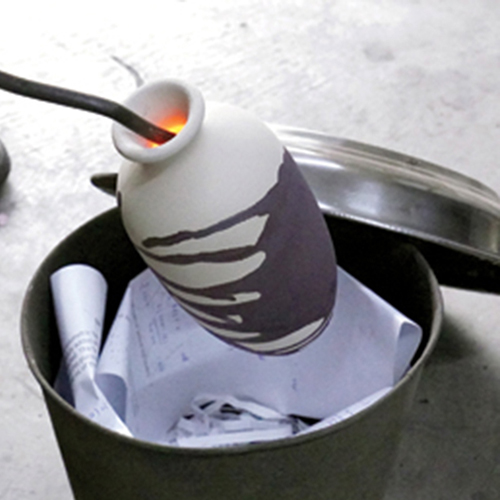 The Copper Matte Raku TechniqueRaku firing consists of heating the ceramic piece to the temperature required to melt any glaze on the surface, then removing the piece from the kiln while it is still red hot and any glaze is molten.
The Copper Matte Raku TechniqueRaku firing consists of heating the ceramic piece to the temperature required to melt any glaze on the surface, then removing the piece from the kiln while it is still red hot and any glaze is molten. -
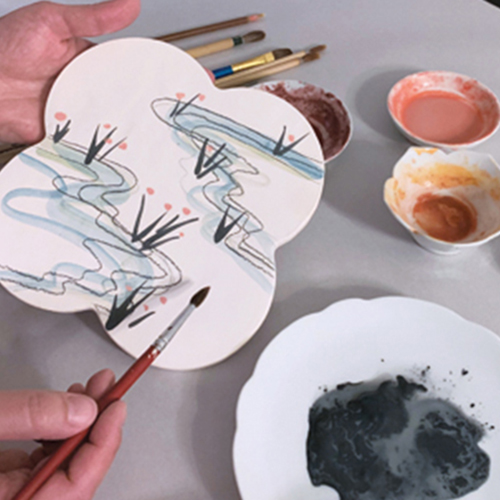 The Enduring QuatrefoilI was initially drawn to the familiarity of the quatrefoil motif, but also fell in love with the negative spaces created when repeated shapes are laid out in a grid.
The Enduring QuatrefoilI was initially drawn to the familiarity of the quatrefoil motif, but also fell in love with the negative spaces created when repeated shapes are laid out in a grid. -
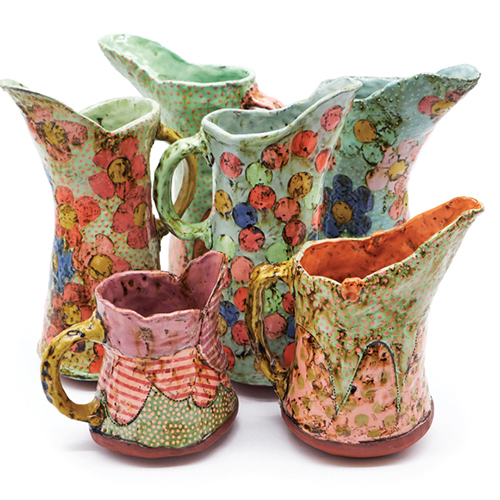 Stories with AgeMy current body of work came about when renovating a 100-year-old cottage. All the layers of paint, wallpaper, and varnish that I peeled away inspired me to create a story with age, texture, and color on my work.
Stories with AgeMy current body of work came about when renovating a 100-year-old cottage. All the layers of paint, wallpaper, and varnish that I peeled away inspired me to create a story with age, texture, and color on my work. -
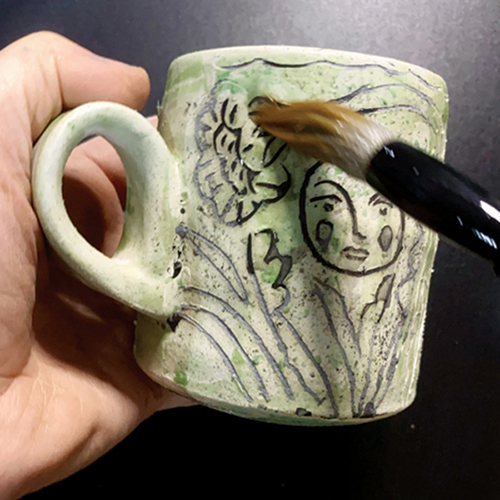 Strategic WildnessI have been trying to translate drawings onto clay for over 20 years, and the reasons that make it brain-breaking for me are also the reasons that make it fulfilling.
Strategic WildnessI have been trying to translate drawings onto clay for over 20 years, and the reasons that make it brain-breaking for me are also the reasons that make it fulfilling. -
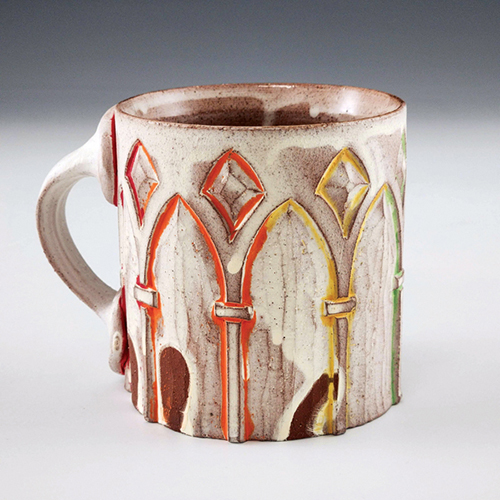 Contemplative CarvingMy hope is to contribute something beautiful to society, something that will impact the human heart, drawing us out of ourselves into something greater and higher, something that can fill us with a hunger for truth, goodness, and beauty.
Contemplative CarvingMy hope is to contribute something beautiful to society, something that will impact the human heart, drawing us out of ourselves into something greater and higher, something that can fill us with a hunger for truth, goodness, and beauty. -
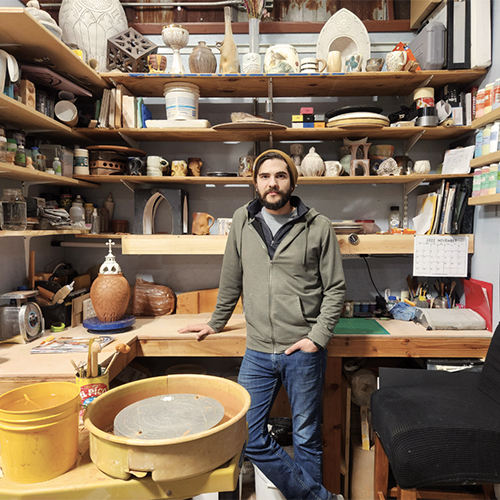 In the Studio: Maker Q&A: Meet Horacio CasillasThere is more to this life. For those of you whose career is pottery, find a hobby. For those of you whose hobby is pottery, it could be more than that.
In the Studio: Maker Q&A: Meet Horacio CasillasThere is more to this life. For those of you whose career is pottery, find a hobby. For those of you whose hobby is pottery, it could be more than that. -
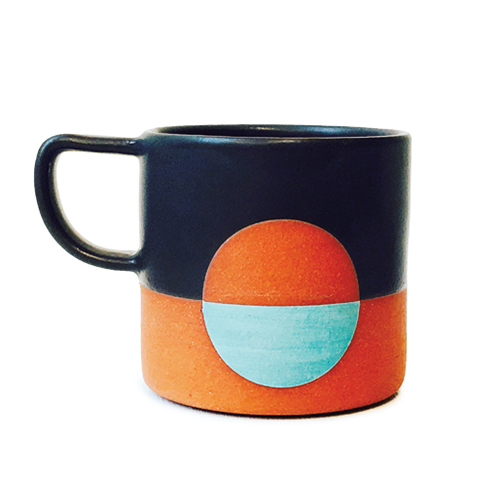 In the Studio: Side Hustles: Sales–Mug ClubCreating a renewable and dependable revenue stream through online ceramic sales takes a bit of ingenuity. Read how one ceramic artist profits both financially and socially from her Mug Club Membership offering.
In the Studio: Side Hustles: Sales–Mug ClubCreating a renewable and dependable revenue stream through online ceramic sales takes a bit of ingenuity. Read how one ceramic artist profits both financially and socially from her Mug Club Membership offering. -
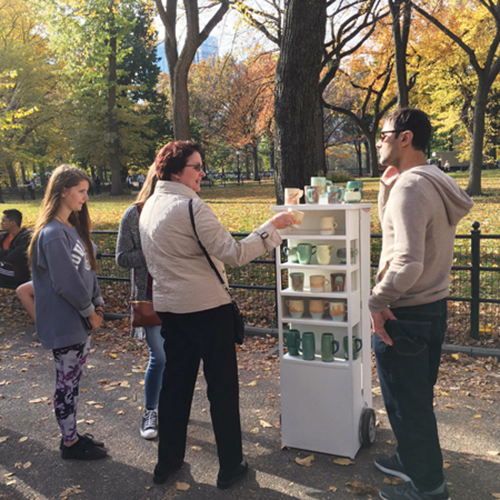 In the Studio: Side Hustles: Sales—Art CartThis ceramic artist developed a unique studio on wheels to not only sell mugs, but also educate others on the value of the handmade object.
In the Studio: Side Hustles: Sales—Art CartThis ceramic artist developed a unique studio on wheels to not only sell mugs, but also educate others on the value of the handmade object. -
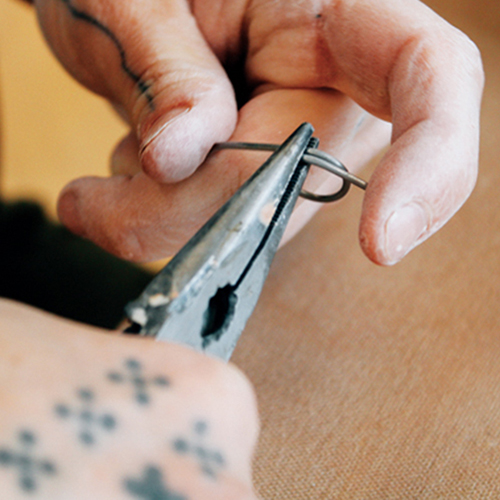 In the Studio: Nichrome Wire FeetIn my practice, I often use nichrome wire to add feet and attachments to my handbuilt pots. There are a few crucial characteristics of nichrome that require respect of the material.
In the Studio: Nichrome Wire FeetIn my practice, I often use nichrome wire to add feet and attachments to my handbuilt pots. There are a few crucial characteristics of nichrome that require respect of the material. -
 Editor's Note: Humble MakingThis issue of Pottery Making Illustrated showcases the practice of up-and-coming artists who never stop learning, teaching, and innovating in order to propel their practice forward.
Editor's Note: Humble MakingThis issue of Pottery Making Illustrated showcases the practice of up-and-coming artists who never stop learning, teaching, and innovating in order to propel their practice forward. -
 Supporters of Pottery Making Illustrated - Jan/Feb 2023
Supporters of Pottery Making Illustrated - Jan/Feb 2023 -
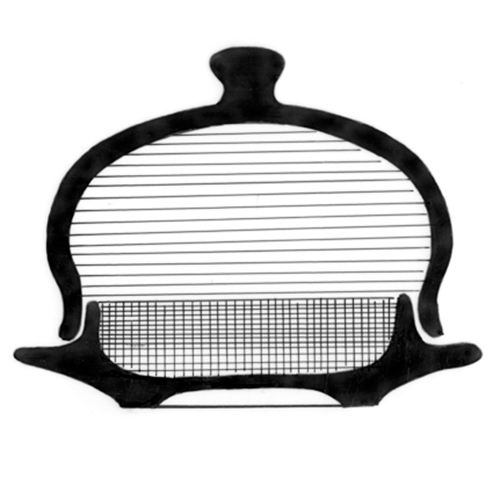 Pottery Illustrated: Cooking and Storage PotsExcerpted from Functional Pottery: Form and Aesthetic in Pots of Purpose by Robin Hopper, published by The American Ceramic Society.
Pottery Illustrated: Cooking and Storage PotsExcerpted from Functional Pottery: Form and Aesthetic in Pots of Purpose by Robin Hopper, published by The American Ceramic Society. -
 Supporters of Pottery Making Illustrated - Nov/Dec 2022
Supporters of Pottery Making Illustrated - Nov/Dec 2022 -
 In the Potter's Kitchen: Beginner's Noodle BowlIf you have an understanding of how to throw basic forms on the potter’s wheel and your aha moments when centering the clay and pulling the walls up have started to click, you will soon be able to throw almost any form.
In the Potter's Kitchen: Beginner's Noodle BowlIf you have an understanding of how to throw basic forms on the potter’s wheel and your aha moments when centering the clay and pulling the walls up have started to click, you will soon be able to throw almost any form. -
 Emergent Craft: The Digital VesselIn my studio practice, I implement tools such as digital modeling and 3D printing. These advancements provide a unique refinement of line and form.
Emergent Craft: The Digital VesselIn my studio practice, I implement tools such as digital modeling and 3D printing. These advancements provide a unique refinement of line and form. -
 Preserving Memories: Handwritten PitchersThe application of heat transforms clay into an archival material—ceramic—that preserves the language of that touch. Cup-and-pitcher sets are some of my favorite things to make because they are designed to be shared.
Preserving Memories: Handwritten PitchersThe application of heat transforms clay into an archival material—ceramic—that preserves the language of that touch. Cup-and-pitcher sets are some of my favorite things to make because they are designed to be shared. -
 Efficient and Effective Slab PlatesI set out making slab-plate forms about four years ago in response to the question: How do I produce a consistent form in the most efficient manner both in construction and firing?
Efficient and Effective Slab PlatesI set out making slab-plate forms about four years ago in response to the question: How do I produce a consistent form in the most efficient manner both in construction and firing?
- «
- 11
- 12 (current)
- 13
- 14
- 15
- 16
- 17
- 18
- 19
- 20
- »
